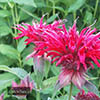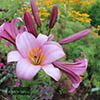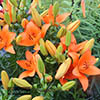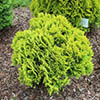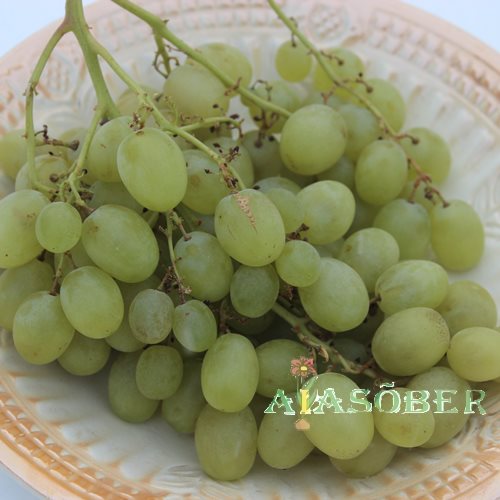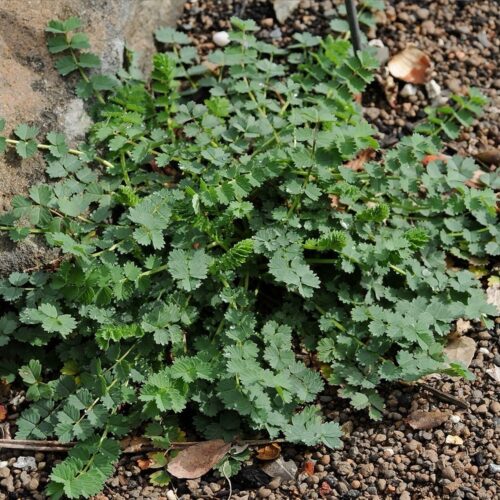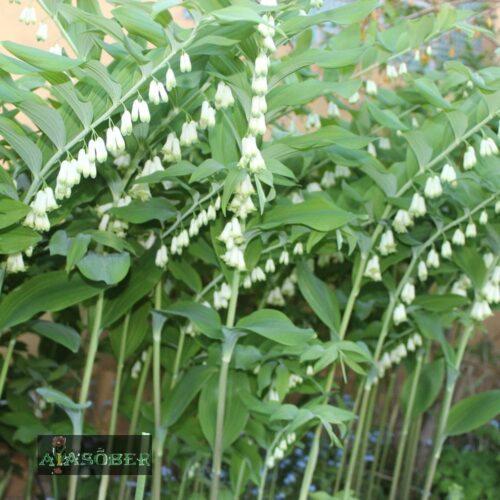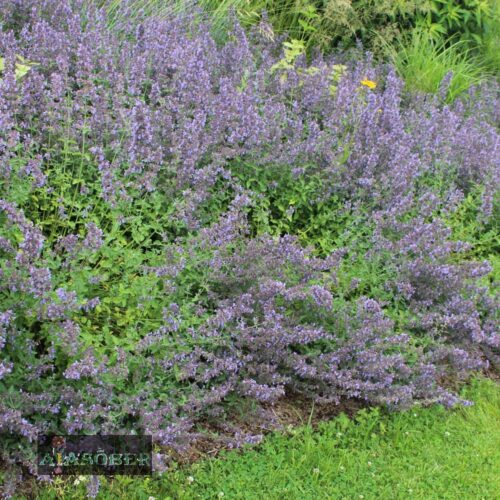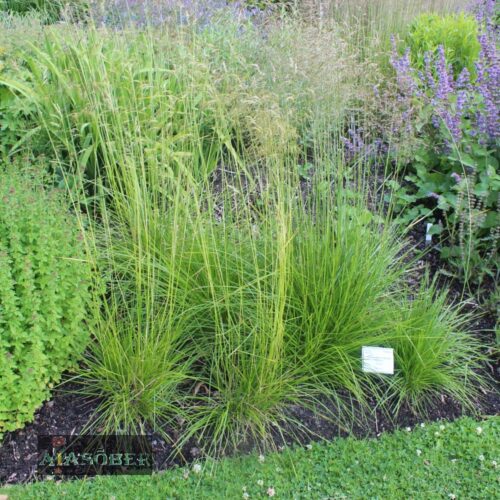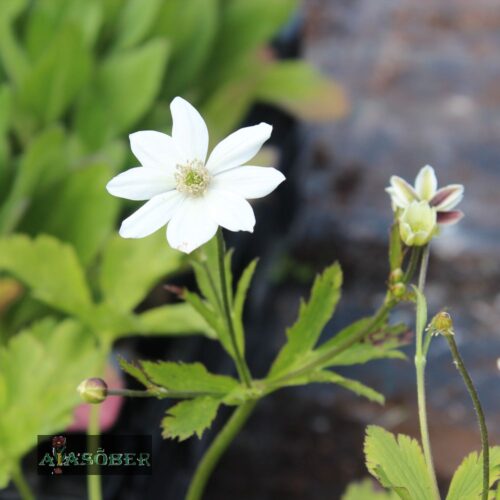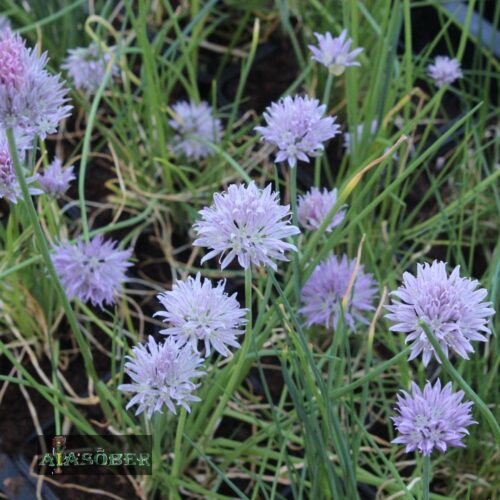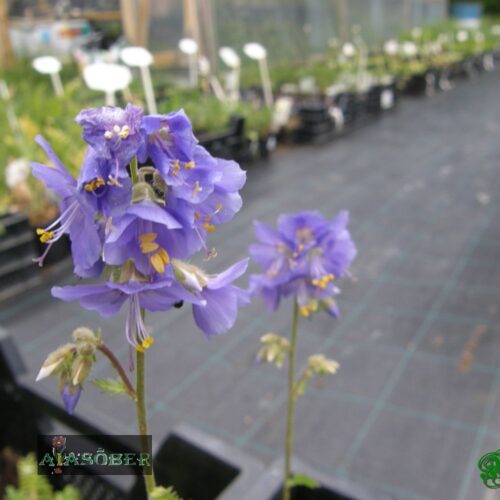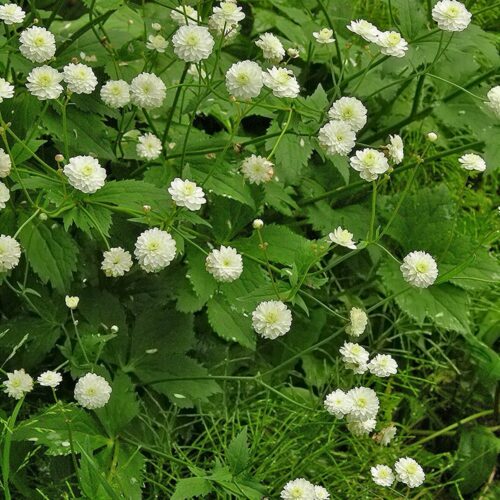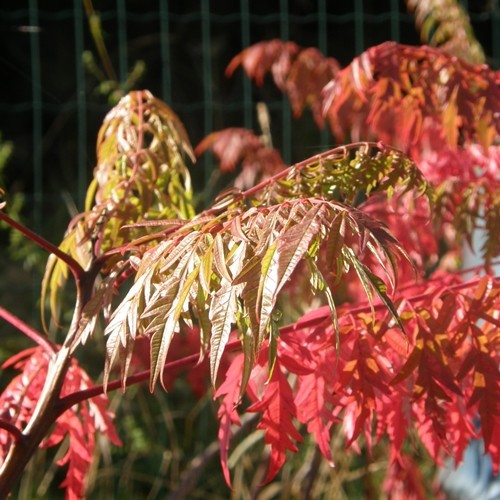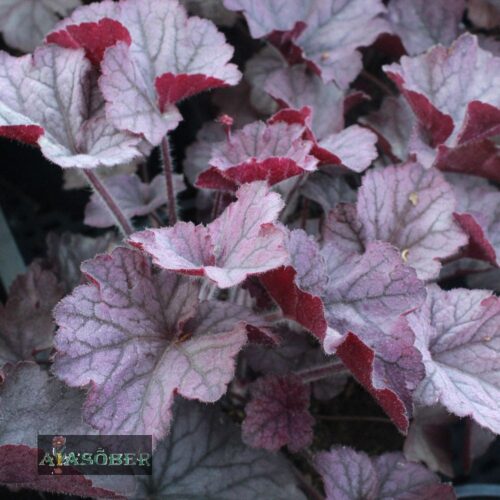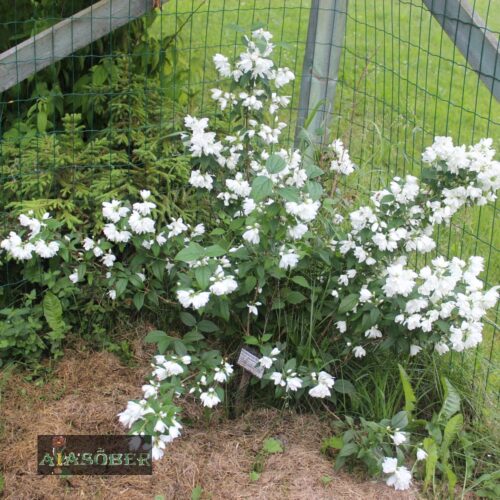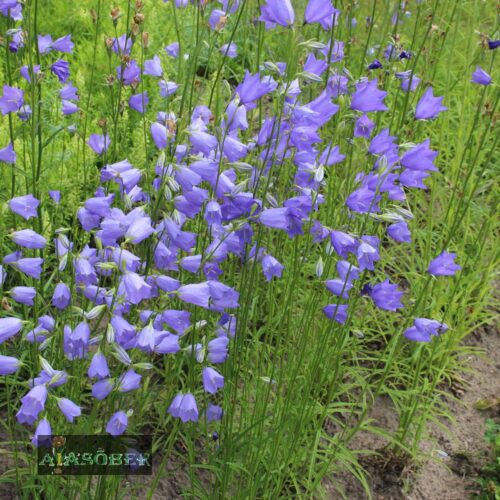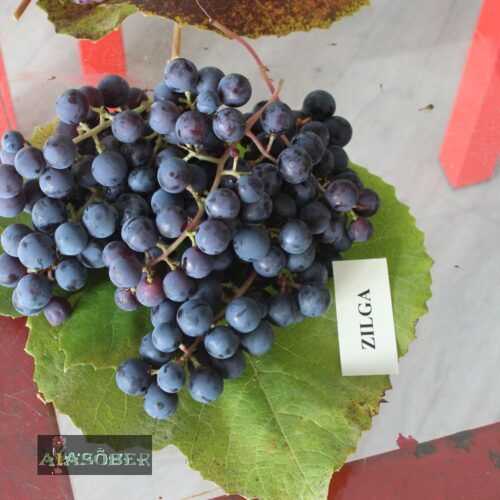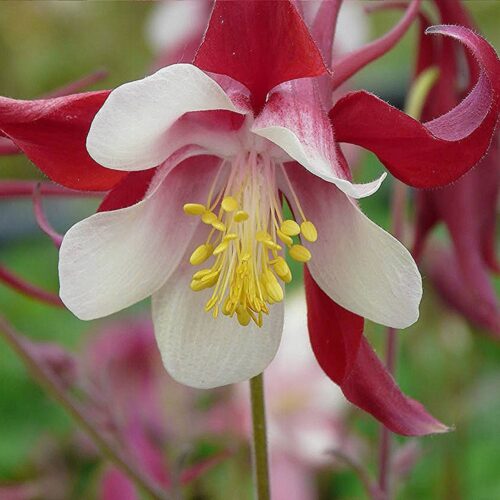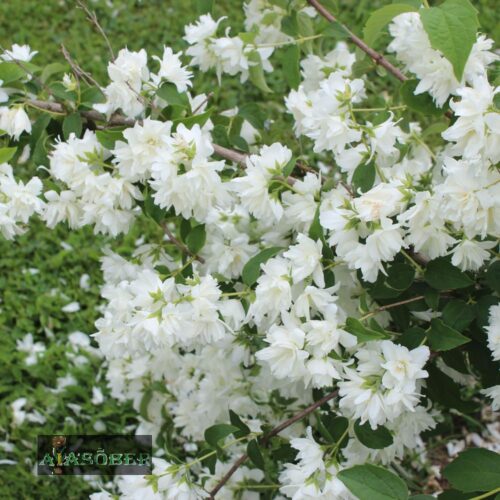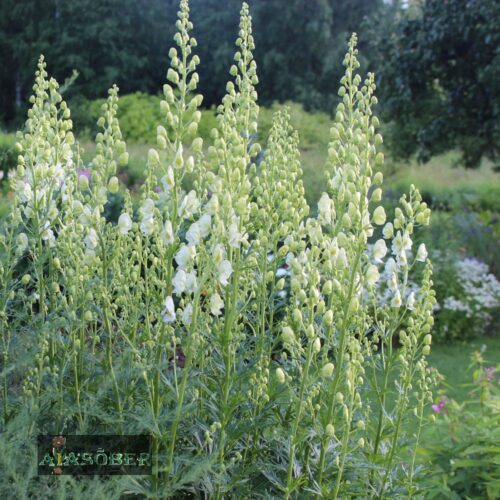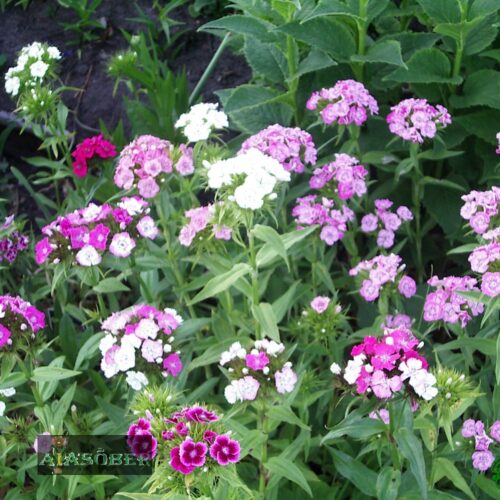Viinapuu Himrod (Vitis vinifera Himrod)
Best grown in deep, loamy, humus-rich, medium moisture, well-drained soils in full sun. The more sun the sweeter the fruit. Tolerates a wide range of soil conditions, including average garden soils, but must have good drainage. Best sited in a location sheltered from winter winds (preferably a southern facing slope) and well removed from frost pockets. Young growth may be damaged in spring by late frosts. This grape is self-pollinating. For quality fruit production, it needs a support system, training, regular spraying and regular pruning to maximize fruit production. It can withstand the somewhat severe weather conditions in parts of the Eastern and Midwestern U.S. (cold winters followed by hot and humid summers) better than many other types of grape. Spreads by self-seeding. A number of wild animals and birds eat the fruits and help distribute the seeds to new locations.
For more detailed information on grape culture for the State of Missouri, see University of Missouri Extension publications on Home Fruit Production, Grape Culture (G6085) and Home Fruit Production Grape Training Systems (G6090), both of which are available for inspection at the Kemper Center Information Desk or on-line at extension.missouri.edu. Click on “Lawn and Gardening.”
Noteworthy Characteristics
Vitis labrusca, commonly known as fox grape, is a woody, deciduous vine that climbs by tendrils to 40’ long. It is native to woodlands and forest margins in eastern North America from Nova Scotia to Ontario south to Louisiana and Florida. It can climb to the tops of tall trees or sprawl horizontally over low-growing shrubs. Rough bark on mature trunks and stems shreds in strips. Bold-textured, oval-cordate, deep green leaves (each to 4-6” long) have appressed whitish to rusty brown woolly hairs on the undersides. Leaves vary in shape but typically have 3 palmate lobes. Each stem has one leaf per node, with tendrils or flowers located across from each leaf. Yellowish-green flowers (1/8” across) borne in compound racemes bloom in June on short, umbelliferous branches. Flowers have a sweet musky fragrance. Flowers give way to drooping clusters (to 8” long) of medium-sized, blue-black, edible grapes (each to 3/4” diameter) which ripen to dark purple in late mid-season. Grapes of this species are noted for having slipskins (skin easily slips off when a grape is squeezed) and a foxy smell and flavor (sweet earthy muskiness) as suggested by the common name of fox grape.
Genus name is the Latin name for the old world vineyard grape (Vitis vinifera).
‘Himrod’ (a V. labrusca hybrid) is a seedless American grape variety. It is a woody, deciduous, tendril climbing vine which typically will grow 15-20′ long unless pruned shorter. Panicles of fragrant, greenish flowers in spring are followed by clusters of white seedless grapes (maturing golden yellow) which ripen in early season (mid August in USDA Zone 5). Considered to be a good for fresh eating and for drying as raisins. Large, shallowly-three-lobed, green foliage. Flowers are attractive to bees. Ripe fruit is attractive to some hornets and wasps.
Problems
Grapes grown for fruit production are high maintenance plants that require regular chemical spraying and pruning. Grapes are susceptible to a large number of diseases, particularly in humid summer climates such as Missouri, including anthracnose, black rot, downy and powdery mildew, gray mold, crown gall and botrytis bunch rot. Insect pests include phylloxera, grape berry moth, Japanese beetle, leaf hopper, leaf roller, mealy bugs, spotted wing drosophila and flea beetles.
Garden Uses
Grapes are primarily grown for fruit production in home fruit gardens where ornamental interest is not a concern. However, grapes do in fact have good ornamental value: bold summer foliage, some fall color, showy fruit and shaggy, twisted trunking and branching often best seen in winter. When grown on fences, walls, trellises, arbors or other structures, grapes can be quite attractive year-round and can provide good cover, screening, or shade to areas around the home.


